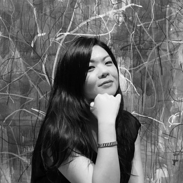Art Fairs
At Kiaf Seoul, a Growing Collector Base Boosts Spirits if Not Sales
The VIP day of the homegrown fair saw a solid turnout but sales were expectedly slow, gallerists said.
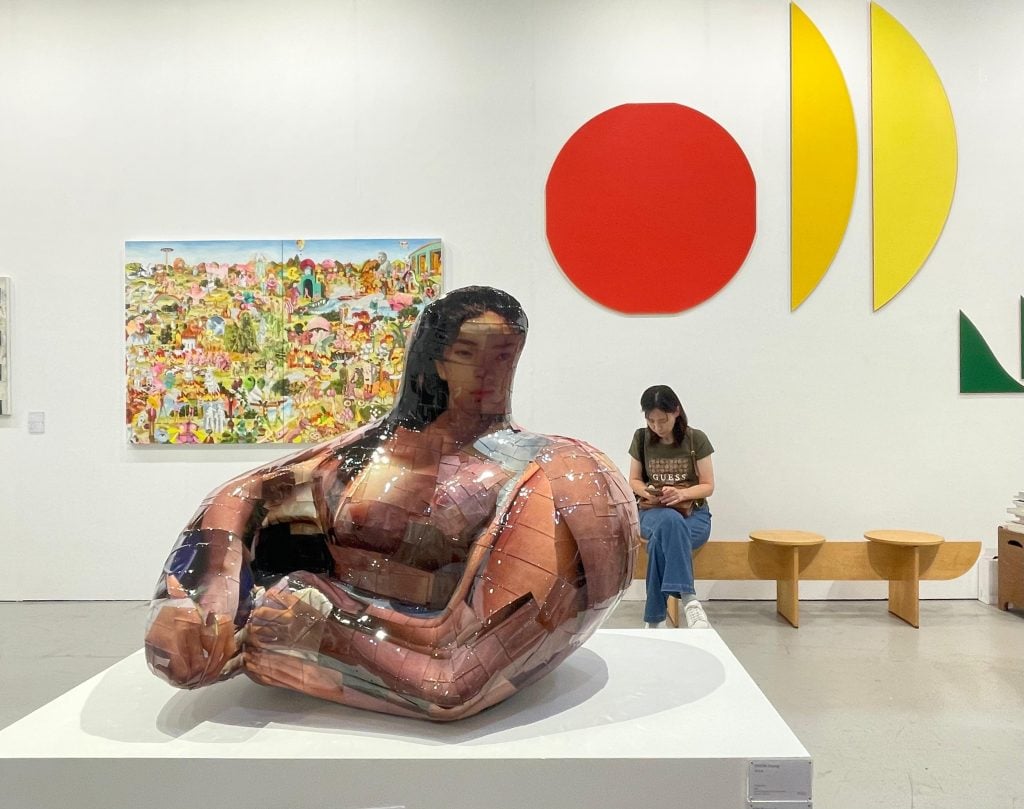
At Kiaf Seoul’s VIP day, the queue was long and the aisles were swamped with curious art aficionados, all armed with their latest model of camera phones and furiously taking snaps of artworks that caught their eye. Nevertheless, sales during the fair’s first hours were slow. Gallerists said clients were picky and wanted to see more before committing to buying.
Despite anticipating slower sales, many dealers noted that the region’s developing collector base is a big draw. The homegrown fair opened its 23rd edition on Wednesday, September 4, in tandem with Frieze Seoul at Coex in the Gangnam district. Kiaf brings together 206 galleries this year from 22 countries, slightly down from last year’s 210. More than 130, or 60 percent, of the exhibitors are domestic galleries. Thirty-six galleries are new to the fair.
Dal-Seung Hwang, president of the Galleries Association of Korea, the organizers of Kiaf, said the increase in new exhibitors—up from 30 last year—was a reflection of a concerted effort to “elevate” the quality of the fair amid a surge in attention to the region, especially since Frieze launched its fair three years ago.
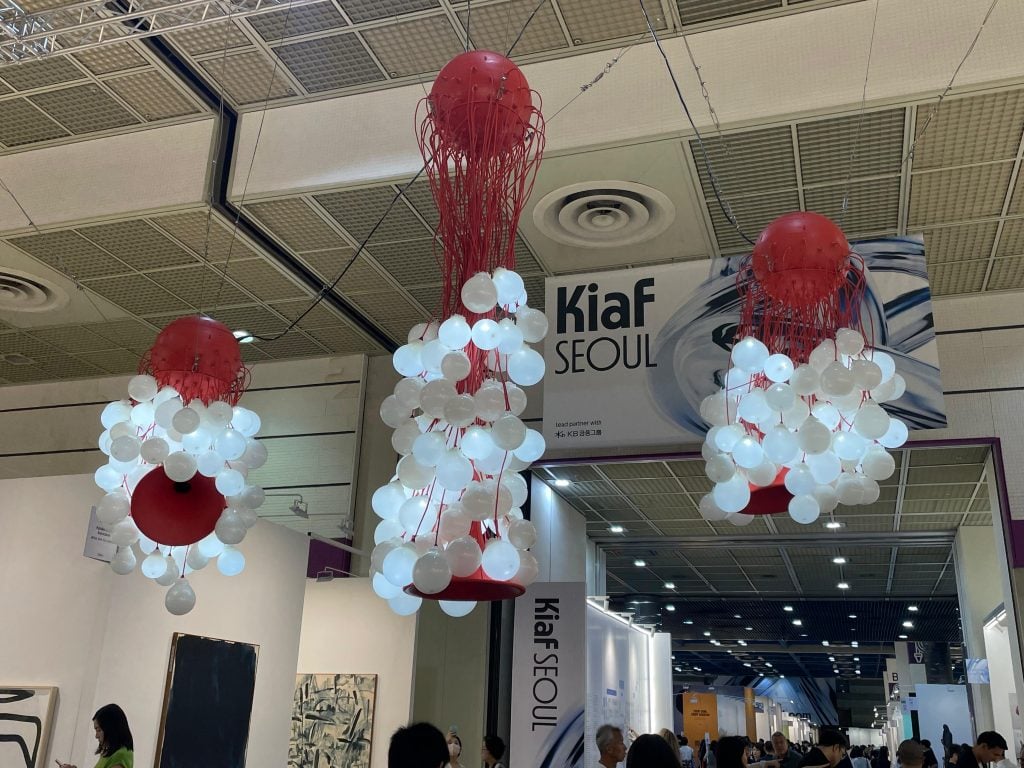
Minha Yang, Closed-loop life system 2409, featured as part of Kiaf onSite at Kiaf Seoul 2024. Photo: Vivienne Chow.
Jung Lee, head of the Seoul-based Gana Art and vice-chairman of Kiaf Seoul’s operating committee, noted that while some clients who entered the market during the post-pandemic boom have slowed down their buying, those who remain have developed a renewed interest in established artists with a more stable market.
“I found them more serious and thoughtful about what they want,” Lee said.
Duhyun Yun, director of the Seoul-based Gallery Kiche, conceded that the market has slowed down, but he observed a similar shift in the dynamics of the Korean collecting community. He said a lot of new buyers entered the market during the boom who were focused on young, emerging artists. But now, some of them have moved on to follow bigger galleries. Their taste also evolved from pop, figurative paintings to abstract and conceptual works, including installations and sculptures.
“But the big collectors now explore the young artists,” Yun noted. “They realized that emerging artists could hardly get shown by big galleries, and so they had to look at smaller to mid-tier galleries.”
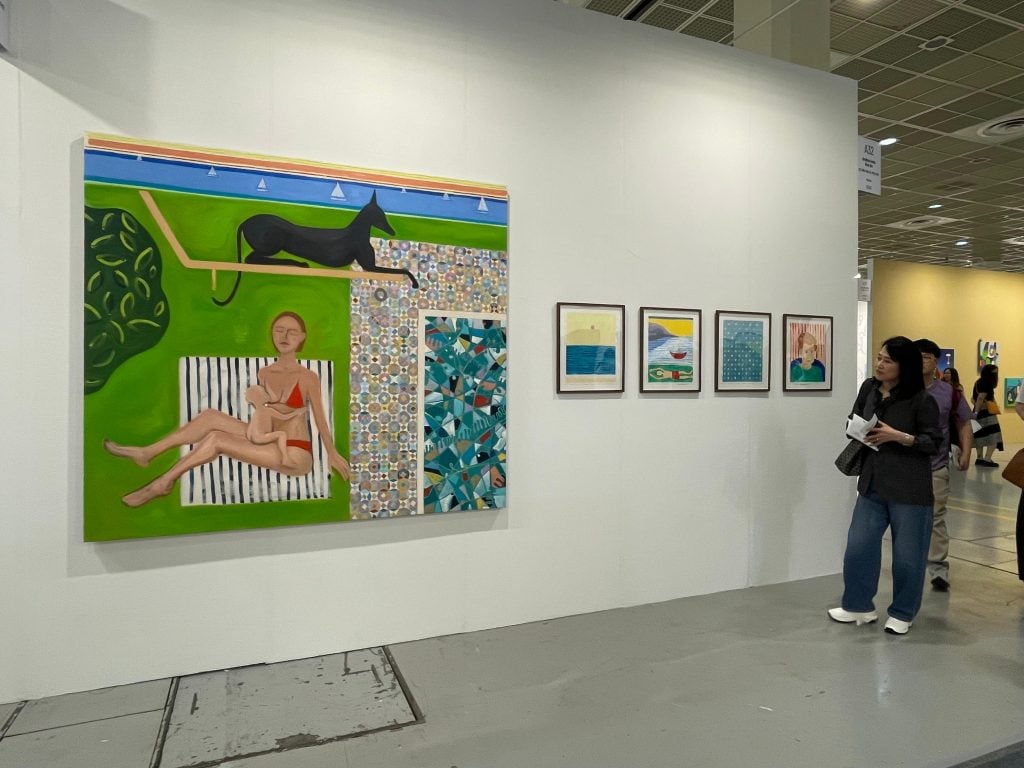
A visitor is looking at the paintings by Ireland-based artist Sinead Breslin at Andrea Festa Fine Art at Kiaf Seoul 2024. Photo: Vivienne Chow.
Despite a challenging global economic environment, dealers generally remained hopeful. Some gallerists said that slower sales were expected, given the current market slump. Collectors may have reserved the works on the first day, but they would only make their final decision after viewing more works, the dealers said. Paintings and wall-based works dominated the fair’s booths.
But the market condition did not stop dealers from trying. First-time exhibitor Andrea Festa said he had clients based in Asia and wanted to give the region a try. “We are a four-year-old gallery based in Rome. We need to reach out,” Festa said.
He brought a solo presentation of Ireland-based artist Sinéad Breslin, who was mentored by Alex Katz. Paintings on show ranged from €11,000 to €17,500 ($12,164 to $19,352). Festa also discovered that, coincidentally, the local Gallery Woo was showing a portrait of the artist by Katz.
Other first-timers included 193 Gallery from Paris, Albarran Bourdais from Madrid, New York-based Ethan Cohen Gallery, and WOAW Gallery from Hong Kong.
Meanwhile, Sundaram Tagore, who is based in New York and also has outposts in Singapore and London, returned to Kiaf for the first time since 2008. Located in a prominent booth right next to the entrance of the exhibition hall, Tagore is showcasing a suite of large-scale paintings and sculptures. He sold a 7.5-foot long waterfall painting by a Japanese artist for $420,000 to an international client during the first hour.
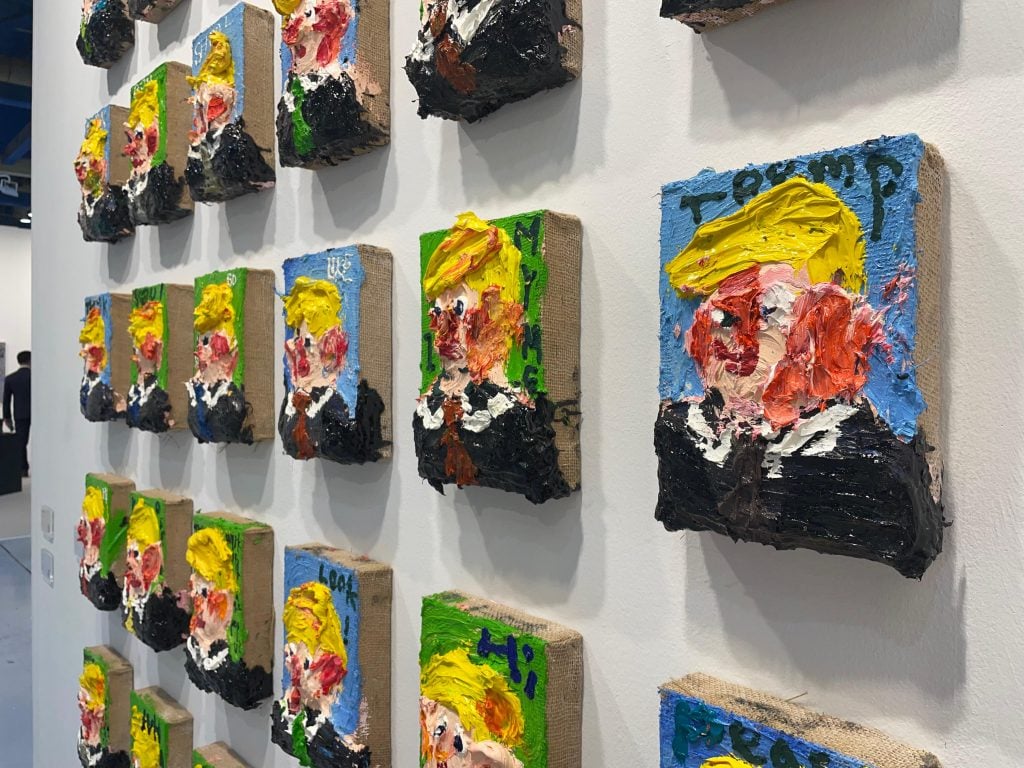
Nanae Mitobe, Trump’s ears are like Van Gogh’s (2024), on view at the booth of Tokyo-based Art Front Gallery at Kiaf Seoul 2024. Photo: Vivienne Chow
Berlin-based Kornfeld, which returned for a fifth time to Kiaf this year, sold a work by Chinese artist Rao Fu, who was among the diverse line-up of European and Asian artists featured in the gallery’s booth. Owner Alfred Kornfeld said he traveled to Seoul on a regular basis and worked with Korean artists and Asian diasporic artists, but opening an outpost was still out of the question.
“I”m interested in partnerships,” he said. He revealed that he will be working on projects to show Korean artists in his Berlin space.
Kiaf Plus, a section featuring emerging artists and younger galleries that was launched in 2022, returned with 27 exhibitors this year. It has adopted a new format which sees its sections spreading across the main exhibition halls and The Platx at COEX, a new venue.
Among the highlights of Kiaf Solo, which is dedicated to solo presentations, are Imon Boy’s reinterpretations of street art presented by Madrid-based La Causa Art Gallery and the egg tempera paintings by Lee Maxey at the booth of New York gallery Olympia.
The fair, which runs through Sunday, September 8, is also presenting a special exhibition titled “Invisible Transitions” curated by Seungah Lee, director of Urban Art Lab in Seoul and multimedia specialist. Part of Kiaf onSite, the show investigates the relationship between human nature and technology features installation works scattered across the fairground.

